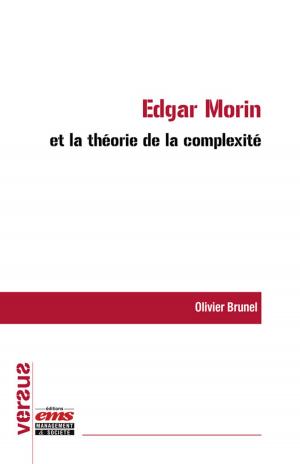How to Fight Mortgage Foreclosure and Keep Your House
Nonfiction, Reference & Language, Law, Real Estate, Business & Finance, Marketing & Sales, Consumer Behaviour| Author: | Alexander Oliver, J.D. | ISBN: | 9781476095264 |
| Publisher: | Alexander Oliver, J.D. | Publication: | May 22, 2012 |
| Imprint: | Smashwords Edition | Language: | English |
| Author: | Alexander Oliver, J.D. |
| ISBN: | 9781476095264 |
| Publisher: | Alexander Oliver, J.D. |
| Publication: | May 22, 2012 |
| Imprint: | Smashwords Edition |
| Language: | English |
This book explains the different stages of a law suit and tells the average person what to do and how to fight back. It also refers those who really want to fight back to other resources that can be successfully used to actually win a mortgage foreclosure complaint. It explains the different stages of the suit: 1) the filing of the complaint and summons by the bank; 2) what must be done after you have been served the lawsuit. 3) filing of responsive pleadings and an answer within the prescribed time periods; 4) conducting discovery to find out specific facts; 5) going to mediation to attempt to modify your mortgage, get the bank to agree to a deed in lieu of foreclosure, or conduct a short sale; 6) going to trial; 7) taking an appeal; and 8) filing for bankruptcy.It also contains real forms and examples of pleadings that have been used in various states in the USA.
Foreclosure is a specific legal process in which a lender attempts to recover the balance of a loan from a borrower who has stopped making payments to the lender by forcing the sale of the asset used as the collateral for the loan.[Formally, a mortgage lender (mortgagee), or other lien holder, obtains a termination of a mortgage borrower (mortgagor)'s equitable right of redemption, either by court order or by operation of law (after following a specific statutory procedure).
Usually a lender obtains a security interest from a borrower who mortgages or pledges an asset like a house to secure the loan. If the borrower defaults and the lender tries to repossess the types of foreclosure the mortgage holder can usually initiate foreclosure at a time specified in the mortgage documents, typically some period of time after a default condition occurs. Within the United States, Canada and many other countries, several types of foreclosure exist. In the U.S., two of them – namely, by judicial sale and by power of sale – are widely used, but other modes of foreclosure are also possible in a few states. Foreclosure by judicial sale, more commonly known as judicial foreclosure, which is available in every state (and required in many), involves the sale of the mortgaged property under the supervision of a court, with the proceeds going first to satisfy the mortgage; then other lien holders; and, finally, the mortgagor/borrower if any proceeds are left. Under this system, the lender initiates foreclosure by filing a lawsuit against the borrower. As with all other legal actions, all parties must be notified of the foreclosure, but notification requirements vary significantly from state to state. A judicial decision is announced after the exchange of pleadings at a (usually short) hearing in a state or local court. In some rather rare instances, foreclosures are filed in federal courts.
Foreclosure by power of sale, also known as nonjudicial foreclosure, is authorized by many states if a power of sale clause is included in the mortgage or if a deed of trust with such a clause was used, instead of an actual mortgage. In some states, like California, nearly all so-called mortgages are actually deeds of trust. This process involves the sale of the property by the mortgage holder without court supervision (as elaborated upon below). This process is generally much faster and cheaper than foreclosure by judicial sale. As in judicial sale, the mortgage holder and other lien holders are respectively first and second claimants to the proceeds from the sale.
This book explains the different stages of a law suit and tells the average person what to do and how to fight back. It also refers those who really want to fight back to other resources that can be successfully used to actually win a mortgage foreclosure complaint. It explains the different stages of the suit: 1) the filing of the complaint and summons by the bank; 2) what must be done after you have been served the lawsuit. 3) filing of responsive pleadings and an answer within the prescribed time periods; 4) conducting discovery to find out specific facts; 5) going to mediation to attempt to modify your mortgage, get the bank to agree to a deed in lieu of foreclosure, or conduct a short sale; 6) going to trial; 7) taking an appeal; and 8) filing for bankruptcy.It also contains real forms and examples of pleadings that have been used in various states in the USA.
Foreclosure is a specific legal process in which a lender attempts to recover the balance of a loan from a borrower who has stopped making payments to the lender by forcing the sale of the asset used as the collateral for the loan.[Formally, a mortgage lender (mortgagee), or other lien holder, obtains a termination of a mortgage borrower (mortgagor)'s equitable right of redemption, either by court order or by operation of law (after following a specific statutory procedure).
Usually a lender obtains a security interest from a borrower who mortgages or pledges an asset like a house to secure the loan. If the borrower defaults and the lender tries to repossess the types of foreclosure the mortgage holder can usually initiate foreclosure at a time specified in the mortgage documents, typically some period of time after a default condition occurs. Within the United States, Canada and many other countries, several types of foreclosure exist. In the U.S., two of them – namely, by judicial sale and by power of sale – are widely used, but other modes of foreclosure are also possible in a few states. Foreclosure by judicial sale, more commonly known as judicial foreclosure, which is available in every state (and required in many), involves the sale of the mortgaged property under the supervision of a court, with the proceeds going first to satisfy the mortgage; then other lien holders; and, finally, the mortgagor/borrower if any proceeds are left. Under this system, the lender initiates foreclosure by filing a lawsuit against the borrower. As with all other legal actions, all parties must be notified of the foreclosure, but notification requirements vary significantly from state to state. A judicial decision is announced after the exchange of pleadings at a (usually short) hearing in a state or local court. In some rather rare instances, foreclosures are filed in federal courts.
Foreclosure by power of sale, also known as nonjudicial foreclosure, is authorized by many states if a power of sale clause is included in the mortgage or if a deed of trust with such a clause was used, instead of an actual mortgage. In some states, like California, nearly all so-called mortgages are actually deeds of trust. This process involves the sale of the property by the mortgage holder without court supervision (as elaborated upon below). This process is generally much faster and cheaper than foreclosure by judicial sale. As in judicial sale, the mortgage holder and other lien holders are respectively first and second claimants to the proceeds from the sale.















